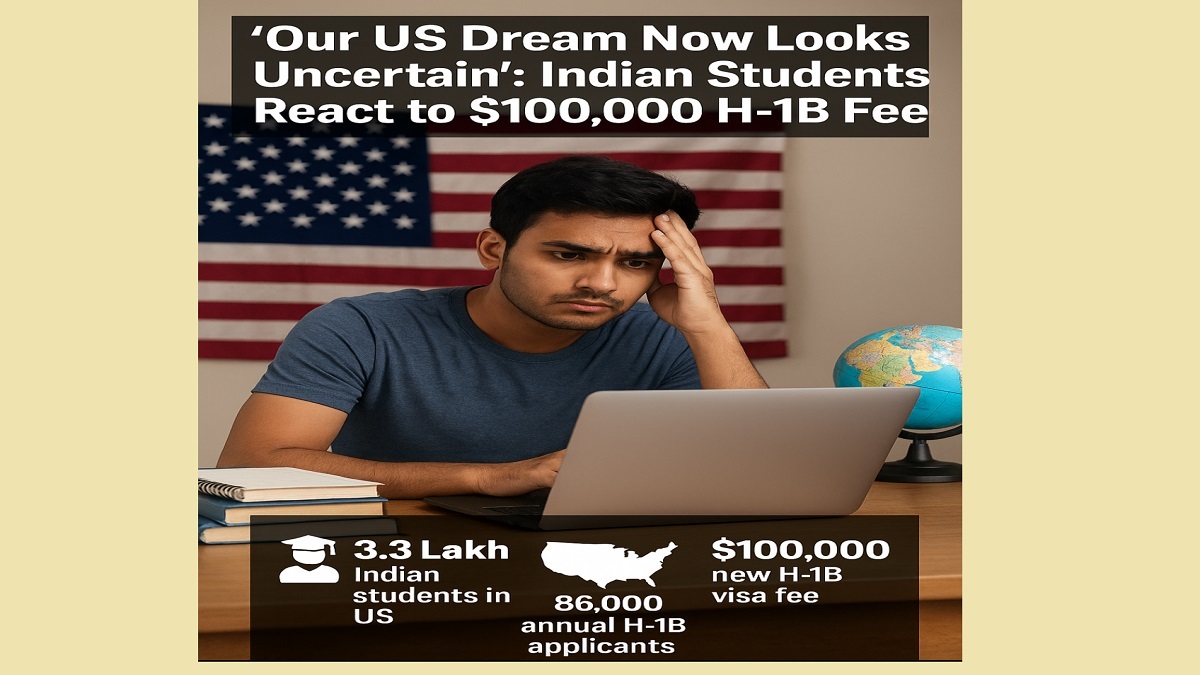Stricter visa rules push students to explore alternatives in Canada, UK, and Australia
The U.S. government has imposed a $100,000 annual fee on H-1B visas, alarming Indian students planning to work in America after completing their studies. The executive order by Trump administration will take effect from September 21, 2025.
Indians account for more than 70% of H-1B visa holders, making them the most affected with this change. While that for Indian students navigating the F-1 → OPT → H-1B pathway, the journey to a U.S. career is now costlier and more uncertain.
Students voice confusion online
Indian students have taken to forums and Reddit to express concern over the sudden fee hike: “I expect over the next 12 months, people will hear stories of Indians returning back to India due to the $100k fee… US companies will not pay that much per application,” wrote one user on r/AskIndia.
Another student commented, “Trump just made H-1B visas cost $100,000 a year, it used to be only $215 … most companies won’t pay that much for junior or mid-level jobs.”
These reactions highlight the anxiety among fresh graduates who rely on employer sponsorship for their first U.S. jobs.
Experts and industry voices react
Social media commentary and analysts note the disproportionate impact on Indian professionals. Economic advisor Amitabh Kant tweeted that the U.S. risks “choking innovation” while India could gain from the return of high-skilled talent.
Industry leaders, policy experts are of the view that the abrupt fee hike may leave Indian students and IT firms challenging to adjust recruitment and sponsorship plans.
Alternative Higher Education destinations
In the past few months, education consultants have reported increased interest in destinations other than the U.S. Lets take a look at some these countries:
Canada: Offers Post-Graduation Work Permit (PGWP) and clear paths to permanent residency.
UK: Graduate Route allows two years of post-study work (three for PhDs), this giving good time to students to secure jobs.
Australia: Extended post-study work visas for STEM courses.
“Students are now asking more questions about return on investment and whether U.S. education still guarantees a viable career path,” said a Delhi-based overseas education advisor.
What this means for Indian students
While the fee is levied on employers, students are directly affected: fewer companies may sponsor visas, job offers may shrink, and salaries might adjust to offset costs. With over 3.3 lakh Indian students in the U.S. and nearly 86,000 applying for H-1B annually, the policy could reshape career strategies.
As per experts, this does not mark the end of the “American Dream,” but students must plan carefully. They suggest destinations like Canada, the UK, and Australia are emerging as attractive alternatives to the US, while domestic opportunities in India are also gaining open.
The introduction of $100,000 H-1B fee signals uncertain path for Indian students seeking employment in the USA, provoking many students and their parents to rethink education and career choices abroad.
Read More:
$100,000 H-1B Fee and Stricter Rules Leave Indian Students Struggling to Plan Work Abroad
Follow Shiksha.com for latest education news in detail on Exam Results, Dates, Admit Cards, & Schedules, Colleges & Universities news related to Admissions & Courses, Board exams, Scholarships, Careers, Education Events, New education policies & Regulations.
To get in touch with Shiksha news team, please write to us at news@shiksha.com

